The text reads: In 1958 the building that you are now in was the newly-built Chevalier Tavern & Restaurant. It more-or-less occupied the site of The Old Chevalier Inn, destroyed in ‘The Blitz’ of May 1942.
The Inn had not been opened long, having taken over Chevalier House. This local landmark was, in fact, two early 17th century town houses, with elaborately carved frontages. The house was named after the model of a chevalier (or knight) on horseback, perched on the roof of one of the properties.
For the most of the 18th century Chevalier House was occupied by The Fountain Inn. The Inn may well have got its name from The Carfoix, or public water supply, that stood almost opposite.
Above: Chevalier House, 78-79 Fore Street, before The Blitz.
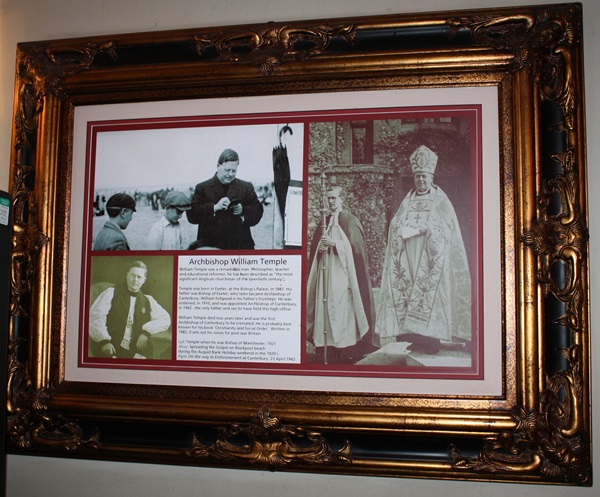
The text reads: William Temple was a remarkable man. Philosopher, teacher and educational reformer, he has been described as “the most significant Anglican churchman of the twentieth century”
Temple was born in Exeter, at the Bishop’s Palace, in 1881. His father was Bishop of Exeter, who later became Archbishop of Canterbury. William flowed in his father’s footsteps. He was ordained, in 1910, and was appointed Archbishop of Canterbury, in 1942 - the only father and son to have held this high office.
William Temple died two years later and was the first Archbishop of Canterbury to be cremated. He is probably best known for his book ‘Christianity and Social Order’. Written in 1942, it’s set out his vision for post-war Britain.
Left: Temple when he was Bishop of Manchester, 1921
Above: Spreading the Gospel on Blackpool beach during the August Bank Holiday weekend in the 1920’s
Right: On the way to Enthronement at Canterbury, 23 April 1942.
Framed photographs and text about Charles Dickens.
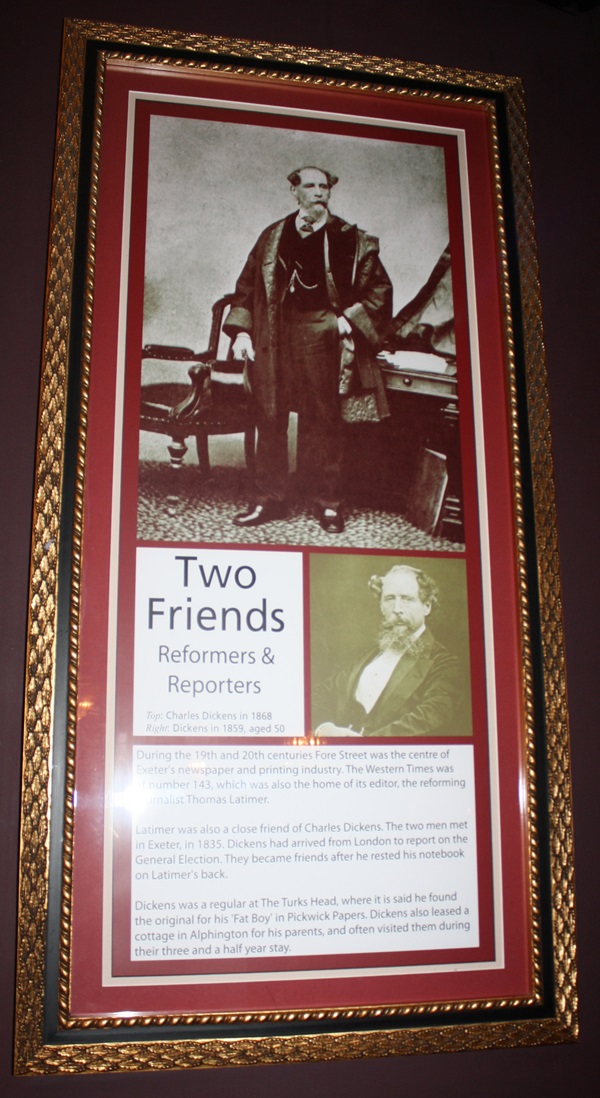
The text reads: During the 19th and 20th centuries Fore Street was the centre of Exeter’s newspaper and printing industry. The Western Times was at number 143, which was also the home of its editor, the reforming journalist Thomas Latimer.
Latimer was also a close friend of Charles Dickens. The two men met in Exeter, in 1835. Dickens had arrived from London to report on the General Election. They became friends after he rested his notebook on Latimer’s back.
Dickens was a regular at The Turks Head, where it it said he found the original for his ‘Fat Boy’ in Pickwick Papers. Dickens also leased a cottage in Alphington for his parents, and often visited them during their three and a half year stay.
Top: Charles Dickens in 1868
Right: Dickens in 1859, aged 50.
Framed drawings and text about Sir Francis Drake.
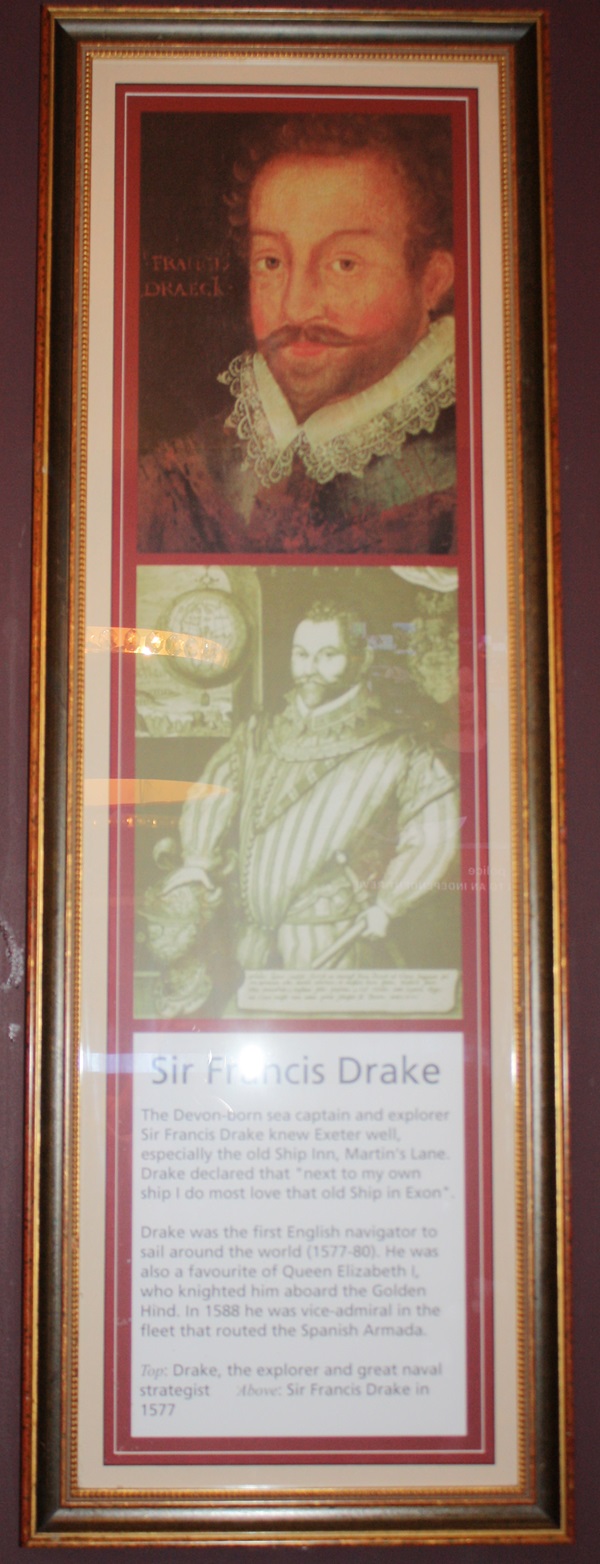
The text reads: The Devon-born sea captain and explorer Sir Francis Drake knew Exeter well, especially the old Ship Inn, Martin’s Lane. Drake declared that “next to my own ship I do most love that old ship in Exon”.
Drake was the first English navigator to sail around the world (1577-80). He was also a favourite of Queen Elizabeth I, who knighted him aboard the Golden Hind. In 1588 he was vice-admiral in the fleet that routed the Spanish Armada.
Top: Drake, the explorer and great naval strategist Above: Sir Francis Drake in 1577.
Framed prints and text about Sir Walter Raleigh.
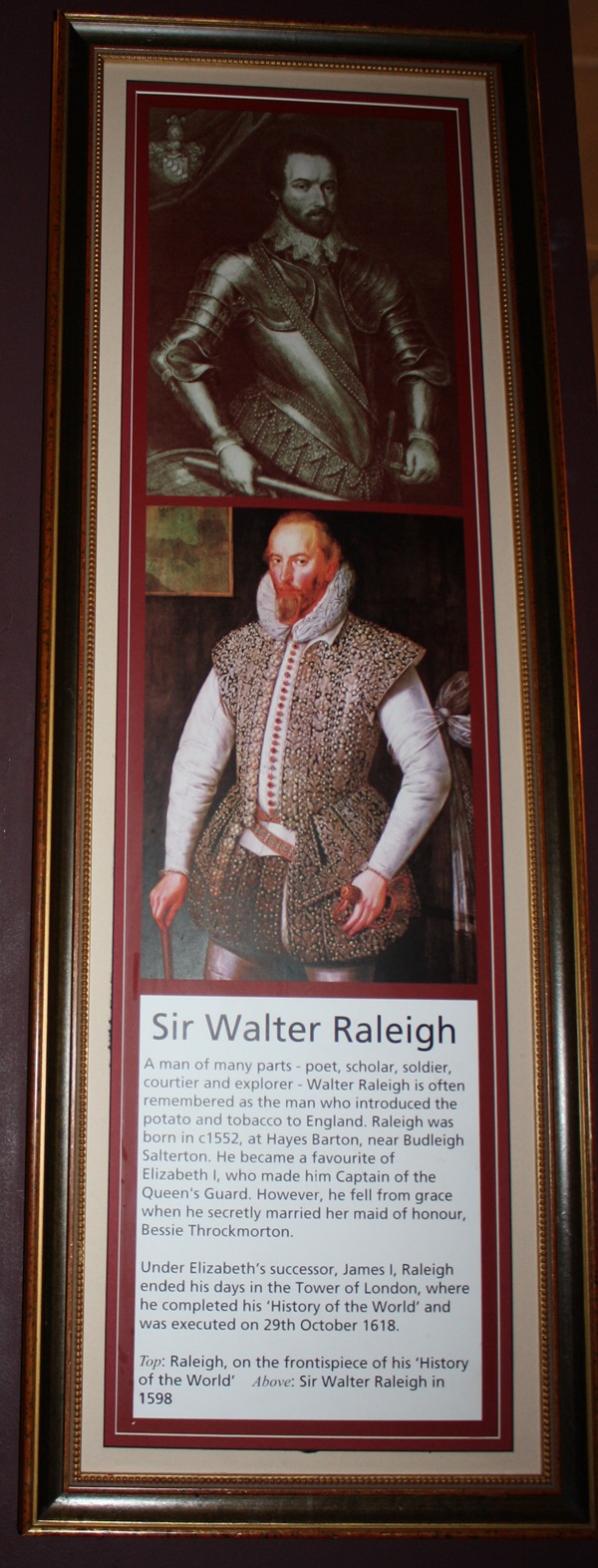
The text reads: A man of many parts – poet, scholar, soldier, courtier and explorer – Walter Raleigh is often remembered as the man who introduced the potato and tobacco to England. Raleigh was born in c1552, at Hayes Barton, near Budleigh Salterton. He became a favourite of Elizabeth I, who made him Captain of the Queen’s Guard. However, he fell from grace when he secretly married her maid of honour, Bessie Throckmorton.
Under Elizabeth’s successor, James I, Raleigh ended his days in the Tower of London, where he completed his ‘History of the World’ and was executed on 29th October 1618.
Top: Raleigh, on the frontispiece of his ‘History of the World’
Above: Sir Walter Raleigh in 1598.
Framed photographs of Tommy Cooper.
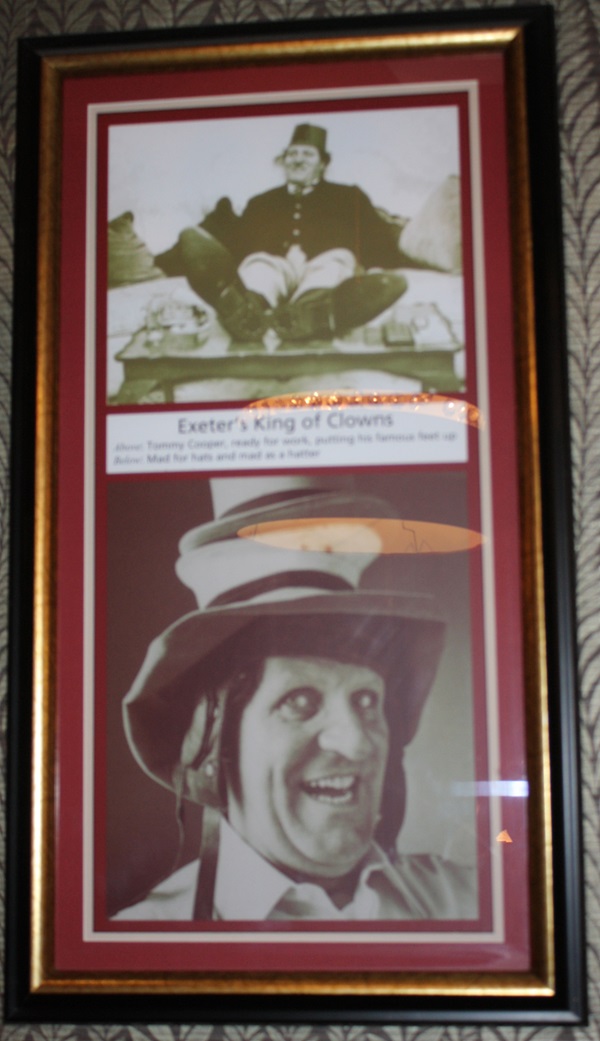
Above: Tommy Cooper, ready for work, putting his famous feet up.
Below: Mad for hats and mad as a hatter.
A framed photograph of the unveiling of the Buller statue, Exeter, on 6 Sept 1906.
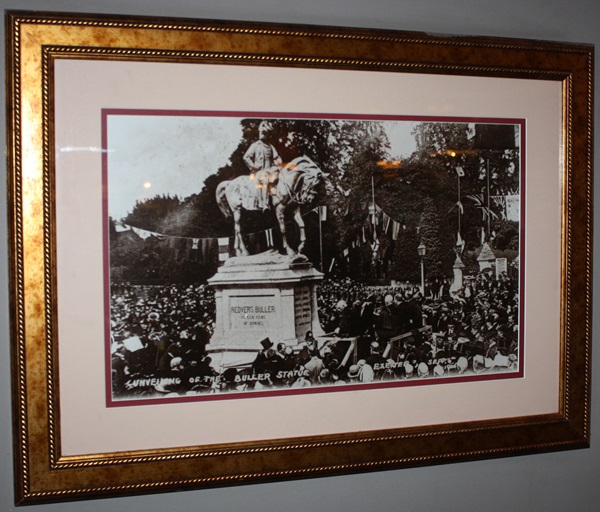
A framed photograph of the entrance to Barracks, Exeter.
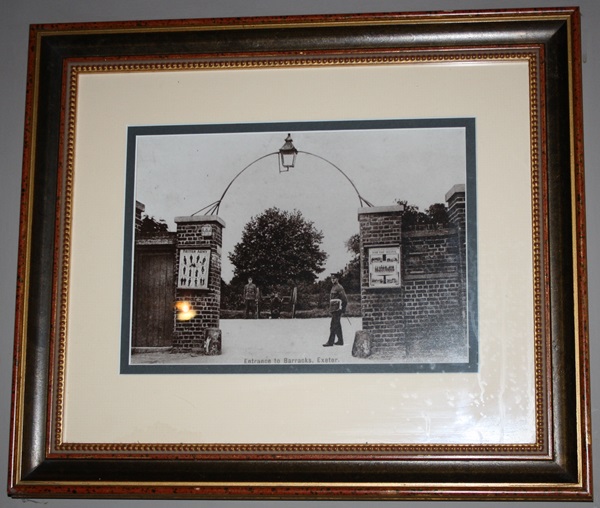
A framed photograph of the Guildhall and High Street, Exeter.
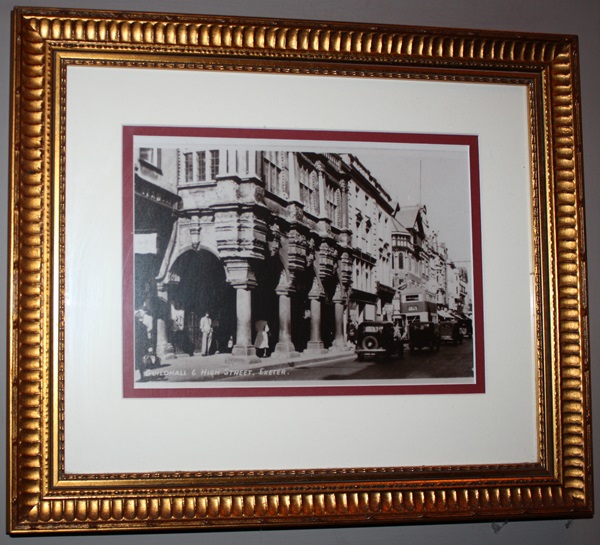
A framed photograph of Exeter's High School for Girls.
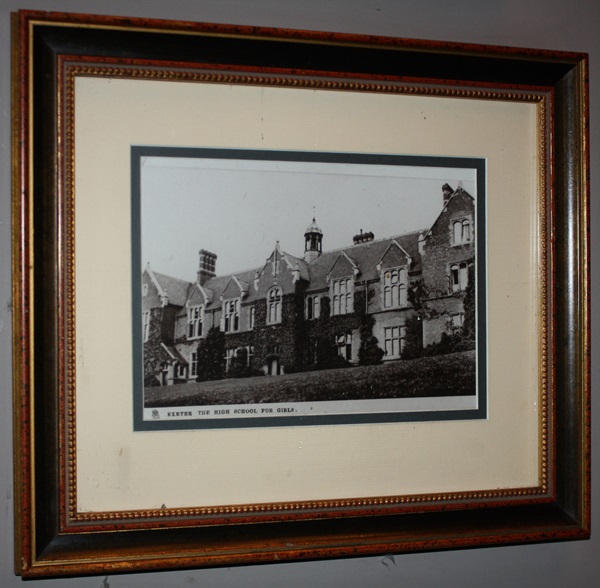
A plaque documenting the history of The Chevalier Inn.
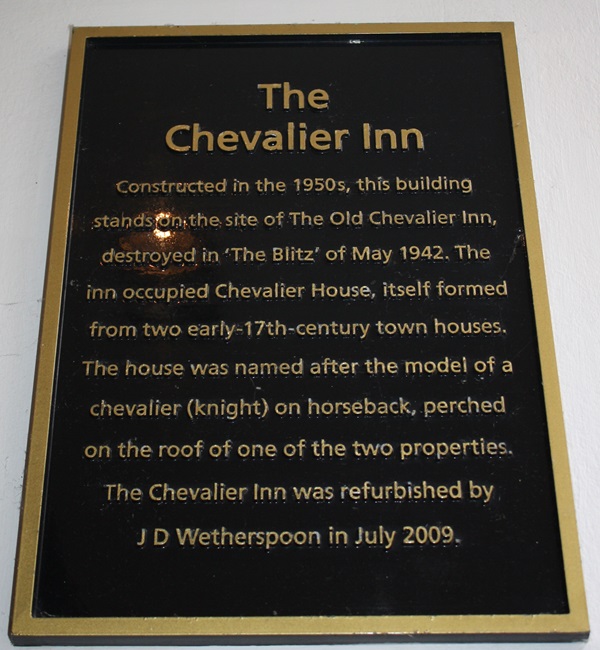
The plaque reads: Constructed in the 1950s, this building stands on the site of The Old Chevalier Inn, destroyed in ‘The Blitz’ of May 1942. The inn occupied Chevalier House, itself formed from two early-17th-century town houses. The house was named after the model of a chevalier (knight) on horseback, perched on the roof of one of the two properties. The Chevalier Inn was refurbished by J D Wetherspoon in July 2009.
External photograph of the building – main entrance.
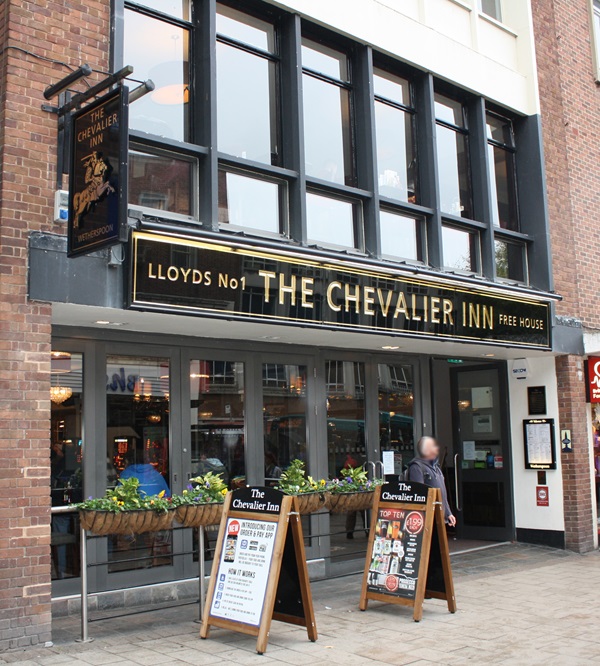
If you have information on the history of this pub, then we’d like you to share it with us. Please e-mail all information to: pubhistories@jdwetherspoon.co.uk